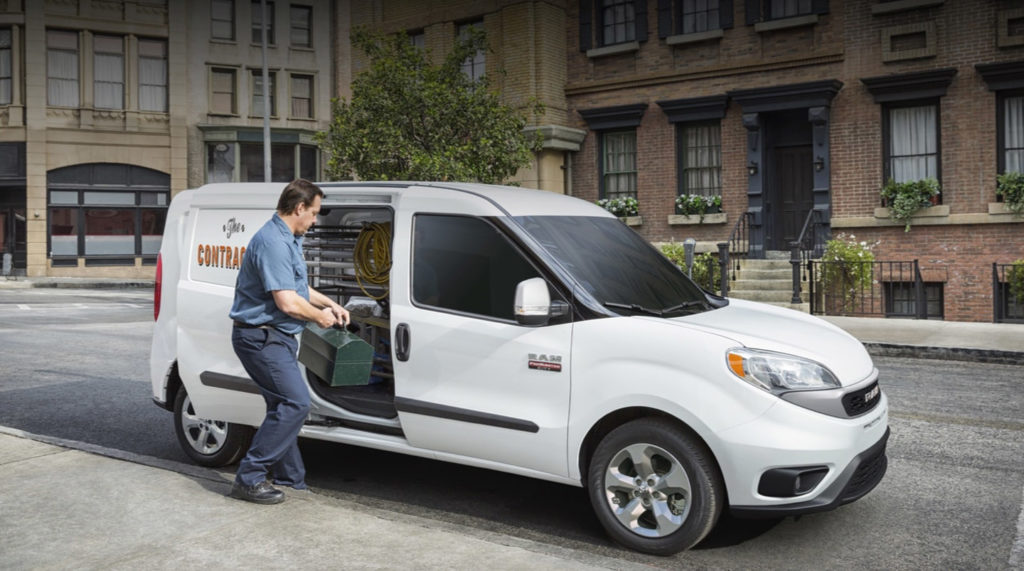In today’s socially distanced world, consumers and businesses both rely on frequent and timely deliveries. During the early days of the COVID pandemic this presented a challenge, as capacity surged and fleets struggled to keep every link of the supply chain, especially the last mile, connected.
Fleets overcame this challenge with a combination of creativity, hard work, and the right vehicles.
However, for some fleets, they’re facing a new challenge as Nissan has announced that it will be ending sales of its vans, including the NV200 in North America, potentially impacting the fleets that use these vehicles as they need to be replaced.
The good news is that fleets have an alternative to the NV 200 that offers best-in-class performance and capacity and the ability to configure it exactly the way you need. That alternative is the Ram ProMaster City.
Best-in-Class Productivity
Designed with fleets in mind, the ProMaster City is equipped with a 2.4L Tigershark Multiair® 2 engine that produces 178 hp compared to the NV200’s 131 hp and 174 lb.-ft. of torque. The engine is mated to a nine-speed automatic transmission.
This engine and transmission combination not only delivers the power and performance fleets need for their last mile deliveries, but is a cost-effective pairing with a best-In-class 28 HWY MPG31 compared to the NV200’s 26 HWY MPG.
But it’s not just having a best-in-class powertrain that will help your drivers make those crucial last-mile deliveries, it’s the technology that will guide them and help keep them safe. The ProMaster City is a modern, connected vehicle that can be equipped with the available Uconnect 4C NAV, connected vehicle platform, which, along with navigation and communication capabilities, features a 5-inch touchscreen and ParkView® Rear Back Up Camera2.
Best-in-Class Capacity
Most important for last-mile deliveries is having the capacity to be as productive as possible. And here the ProMaster City delivers a best-in-class solution.

The ProMaster City provides best-in-class cargo capacity of 131.7 cubic feet3 with nearly vertical side panels that provide plenty of room for deliveries. This breaks down to 4 feet between the wheel wells, 4.4 feet of cargo area height, 5 feet of cargo area width, and 7.3 feet of cargo area length, meaning that the ProMaster City can handle just about any local delivery that a consumer or business requires.
It’s not just cargo capacity, but payload capacity where fleets will see significant last-mile delivery benefits with the ProMaster City. The ProMaster City has a best-in-class payload of 1,890 pounds3 compared to the NV200’s 1,502 pounds.
The ProMaster City is also designed for the drivers making the deliveries. With step-in heights of 23.3 inches at the rear and 21.5 inches at the side, the ProMaster City makes day-long loading and unloading easier.
The ProMaster City is available with a variety of upfits. Your fleet dealer can help you identify and develop the exact upfit you need to fulfill your last-mile delivery demands.
What are you Waiting for?
The ProMaster City provides the total package today’s last-mile delivery fleets need — power, capacity, and versatility. Whether you’re looking for a replacement for an existing van or are adding to your fleet, the ProMaster City is the right vehicle for today’s last-mile delivery operations.
To learn more about how the ProMaster City can answer your fleet’s last mile delivery needs go to https://www.fcausfleet.com/ramtrucks/promaster-city.html
Disclaimers
- Class is small commercial van segment. Manufacturer estimated 28 hwy mpg, 2.4L automatic 9-speed transmission. Actual results may vary.
- Always check entire surroundings visually before backing up.
- Based on BIC Cargo Capacity, BIC Payload and BIC HWY mpg. Class is small commercial van segment (Class 1).
Sponsored by Ram Commercial Vehicles
Source: https://www.worktruckonline.com
CUT COTS OF THE FLEET WITH OUR AUDIT PROGRAM
The audit is a key tool to know the overall status and provide the analysis, the assessment, the advice, the suggestions and the actions to take in order to cut costs and increase the efficiency and efficacy of the fleet. We propose the following fleet management audit.




